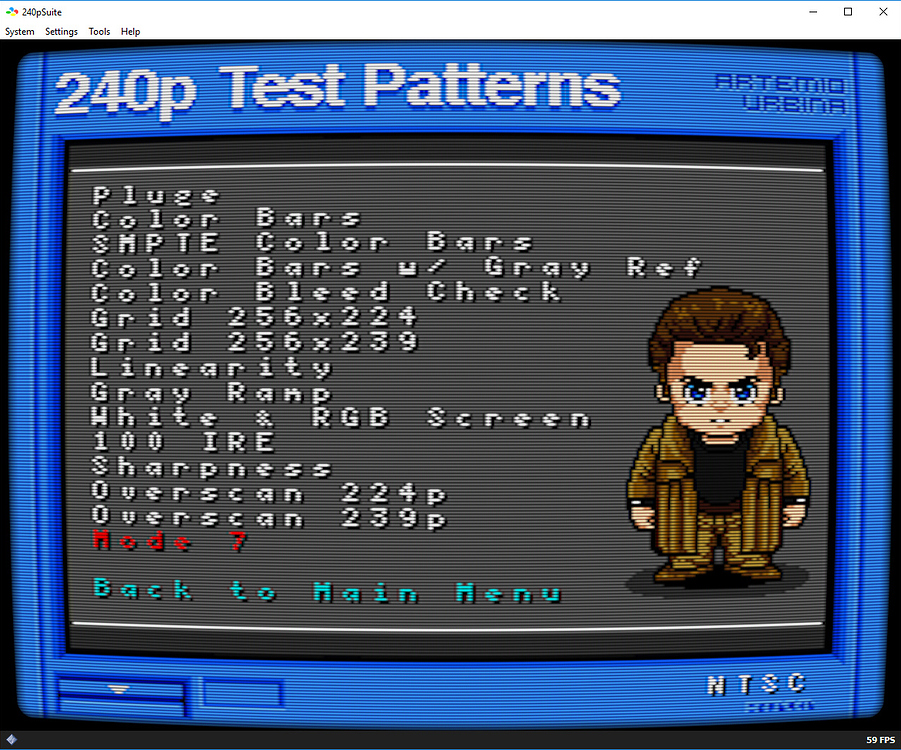
Sets the audio playback volume on a linear scale. Writing to $2005 will trigger the track change, setting the “audio busy” bit on the status port until done. These two registers combine to one 16-bit address, with $2004 being the least significant byte. Writing to $2003 will trigger the seek, setting the “data busy” bit on the status port until done.Īudio track ( $2004 and $2005, MSU_TRACK) These four registers combine to one 32-bit address, with $2000 being the least significant byte, up to $2003. This allows the program to detect availability and as such offer compatibility fallbacks.ĭata seek ports ( $2000 to $2003, MSU_SEEK) Reading from $2002 to $2007 in order returns the string “ S-MSU1” in ASCII. Reads have no effect if the “data busy” bit is set on the status port. Reading from the data read port returns the next byte of data from the MSU1 Data file and increments the stream port’s address automatically.

This allows selectively falling back to SPC700 sound. The “track missing” bit is set if, after seeking to a given audio track, that track is found to be unavailable. This is a rather important step to include if you’re aiming to support the MSU1 in hardware. A common usage for the status port is to lock the SNES CPU after setting an audio track or specifying a seek target on the MSU1 Data file. The revision part will be equal to 1, unless a new version of the MSU1 specification is released, which may add more features. The status port has the following bit layout: AddressĪn explanation of all the registers and their dual functions is given below. Their functions are different between reading and writing. The MSU1 registers range from $2000 to $2007. Or you could cross-fade between the background music on the MSU1 and another piece of music on the SPC700 as your RPG character approaches a performer on the street. On the other hand it could be turned around, playing (sequenced) background music on the SPC700 and a voice track on the MSU1 during a cutscene. It also can’t be used to play more than one audio track at a time – while playing background music on the MSU1, sound effects and jingles must remain on the SPC700. That is, it can’t be used to store four gigabytes of saved games.
BSNES CORE MSU 1 FULL
Another neat trick is to store program data on it, copy this data into the SNES’ main RAM and execute it from there.Īs a practical example, the MSU1 can be used to run full motion video games such as The 7th Guest, which was at one point supposed to be released on the SNES CDROM (specifically, the attempt that would later become the Philips CD-i system – Sony wasn’t the only player here).
BSNES CORE MSU 1 FREE
More popularly, it offers CD-quality music playback, leaving the SNES’ own SPC700 sound chip free to do better sound effects and jingles. The MSU1 expansion chip offers up to four gigabytes of data storage in a single stream, which can be used to store, for example, full motion video data. Paraphrased from the author’s blog, “Logo Pending”. MSU1 basically delivers what Sony was supposed to. But consider this: if Sony didn’t try to claim complete control over all titles on the SNES CD, the SNES would have a larger storage size and CD-Audio capabilities – just like the Genesis and PC-Engine had. A similar thing happened with the TurboGrafx-16/PC-Engine, which also received a CD-ROM attachment, to pretty much the same effect.ĭid you know that Sony was contracted to produce a CD-ROM attachment for the SNES, having previously supplied the system’s sound hardware? It didn’t work out. The Mega CD peripheral added increased storage size and CD-Audio capabilities to it, keeping the rest of the system mostly the same.

This was, like the SNES, a cartridge-based game console. On one side, there was the Sega Mega Drive, also known as the Sega Genesis. A common complaint is that SNES games with CD-quality background music doesn’t go together at all. Perhaps the misunderstanding occurs because in emulation, it is the emulator itself that needs to be modified to support the MSU1 – just like it’s the emulator itself that brings support for the SuperFX et al.Ī lot of people don’t seem to get the point of the MSU1 expansion chip byuu designed. Unfortunately for those who would make this mistake and stick to it, that would disqualify the expansion chips listed above as well. A common misconception is that supporting the MSU1 in hardware would require modifying the main SNES unit, and that it therefore does not “count”. Consequently, it is a part of the game cartridge.
BSNES CORE MSU 1 SERIES
The MSU1 is an expansion chip, not entirely unlike the SuperFX, SDD-1, CX4 or the DSP series used in games such as Yoshi’s Island, Star Ocean, Mega Man X 2 and most games with scenes in Mode 7.


 0 kommentar(er)
0 kommentar(er)
